19. Sep 2022 - DOI 10.25626/0141
Anastasia Felcher is a historian and a cultural heritage scholar. With a PhD in Cultural Heritage Management and Development from the IMT School for Advanced Studies Lucca (2016), her research focuses on the cultural history of East European borderlands. She is a research fellow at the Vienna Wiesenthal Institute for Holocaust Studies (2022-23) as well as an archivist at the Blinken Open Society Archives in Budapest. Previously, she received fellowships from Blinken OSA in Budapest (2016), German Historical Institute in Moscow (2017), Leibniz Institute for History and Culture of Eastern Europe in Leipzig (2019), and the Center for Advanced Studies in Sofia (2019-20).
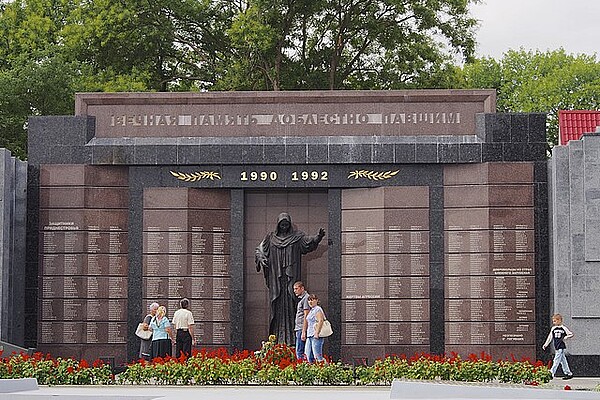
On 2 March 2022, a week after a full-scale military attack was unleashed on Ukraine by Russian troops, thus starting a protracted and devastating war, a campaign to commemorate the 30-year anniversary of another armed conflict took place in one of Ukraine’s neighbouring countries, Moldova. In the early months of the current war, many considered Moldova – located right along the southwestern border of Ukraine – the next potential target of Russian aggression.[1] Such assumptions were plausible for a number of reasons, including Moldova’s political geography, its scarce military resources, its lack of membership in larger military alliances and its history as a post-Soviet republic being on the radar of Russian interest. The primary reason for concern, however, was the so-called ‘frozen conflict’ that began in 1992, after a series of violent clashes, and resulted in a pro-Russian breakaway region: a small strip of land along the Dniester river, sandwiched between Moldova “proper”[2] and Ukraine – that since then has had the permanent presence of Russia’s military on the ground.[3]Indeed, international security experts pay particular attention these days to Moldova and its breakaway region. Yet the current situation has also provided a new context to the issue of how to interpret and commemorate the 1990–92 armed conflict at the Dniester River.
In the breakaway region, Pridnestrov’e, more commonly known as Transnistria, the 30-year anniversary of the armed conflict was a major public-history and memory event. But commemoration also took place in Moldova proper. Yet, looking at both campaigns, the observer is struck by the lack of forgiveness, the discord and the absence of dialogue that mark how the conflict is remembered. Interpretations of the causes, development and consequences of the 1990–92 armed conflict diverge depending on what side of the dividing river you are on – but so is the timeline of events, along which commemoration campaigns are established. Needless to say, today’s narratives are forged by 30 years of commemorative activities from both sides, which will be briefly sketched out below. Today, both sides insist that back in 1990–92 their combatants, military, guard, police, troops and volunteers were defenders. While Moldovan authorities and the veterans who fought in the conflict insist that they defended the integrity and independence of the newly independent state against the threat of secession, the de facto authorities of Transnistria insist that they defended freedom and their right to self-determination against the threat of Moldovan aggression and pan-Romanian nationalism.
Over the course of the past 30 years, commemorative practices further entrenched the confrontation between a pro-Western orientation among Moldovans in Moldova proper and a pro-Russian stance among people in Transnistria. Yet, the emerging memory cultures also reflect the thorny road of a protracted ‘frozen’ conflict that is lingering and increasingly difficult to resolve.[4] In the rather turbulent and unstable political life of Moldova proper, the memory of the 1990–92 conflict has often been a vehicle for political profiling as well as for identity politics and state-building efforts. On the left bank of the Dniester River, the memory of the 1990–92 bloodshed has likewise been a cornerstone of claims for secession and the quest for legitimacy.
Before Russia’s war of aggression against Ukraine, the situation in Moldova was considered one of the less problematic in the post-Soviet space. Everyday interactions and long-term ties between residents and businesses in Moldova proper and the de facto state were more frequent and intense than, for example, in Georgia and Azerbaijan with their breakaway regions of Abhkazia, South Ossetia or Nagorno-Karabakh. Residents of Moldova proper and Transnistria are interconnected by economic, cultural and family ties. Before the COVID-19 pandemic and the war in Ukraine, residents from both sides of the river easily crossed the de facto border whenever necessary. Looking back at 30 years of commemorating the conflict at the Dniester River in Moldova proper and in its breakaway region, in what follows, I will reconstruct how the memory cultures have evolved on both sides of the river and why they are marked by continuous confrontation.
The legislative decisions that triggered certain developments that would eventually lead to the armed conflict were taken while the Soviet Union was still intact. In September 1989, the people’s deputies of the Supreme Soviet of the Moldavian SSR in Chişinău introduced a new law. This Law No 3465 on the “Functioning of Languages on the Territory of the Moldavian SSR” gave the Moldovan language the status of the sole state language and emphasized “the reality of Moldo-Romanian linguistic identity”. The law was part of nationalizing policies implemented by the Moldovan Popular Front, a political movement that temporarily ruled in Chişinău.[5] In late June 1990, parliament declared the sovereignty of the MSSR within the Soviet Union. In this, they joined other republics and units that were declaring their sovereignty while still within the Soviet Union. Two months later, the people’s deputies of the Supreme Soviet from the left bank of the Dniester River, a largely Russified and industrialized region, used the opportunity to declare their region sovereign.[6] After a failed coup in Moscow in August 1991, the Chişinău government declared full state independence while, at the same time, the deputies from the left bank mobilized public support and declared their wish to stay within the USSR and to thus secede from Moldova. In November 1991, almost two months before the final dissolution of the Soviet Union, the secessionists secured their bid for independence by rejecting the communist ideology and renaming their region the “Priednestrovian Moldavian Republic”; yet, they failed to gain recognition as an independent state. This meant they had to negotiate with the Chişinău government over their future status. The situation quickly escalated and both parties entered into an armed conflict.
While the first violent clashes had taken place as early as March 1990 – mostly between civilians and the police in Dubăsari – now in 1992, the military became involved. The fighting was brief and bloody. It took place in three areas along the Dniester River – in Cocieri-Dubăsari, Coşniţa and Bender – and escalated significantly on 19 June 1992 after Moldovan authorities dispatched military forces to Bender, in turn responding to secessionist forces surrounding Bender’s police station and opening fire. After the former 14th Soviet Army intervened on the side of the secessionists, a ceasefire agreement was signed between the Moldovan and Russian presidents on 21 July 1992. The conflict claimed over one thousand lives, including military personnel, guardsmen, policemen, volunteers and civilians. The ceasefire line was turned into a de facto border between Moldova proper and the breakaway region, thereby freezing the conflict rather than resolving it. To observe the ceasefire and security arrangements, joint peacekeeping forces (composed of Russian, Moldovan and Transnistrian battalions) were stationed along this de facto border.
Right after the ceasefire, the de facto authorities of the breakaway region started to memorialize the 1990–92 conflict as a crucial element in their newly created memorial landscape that would integrate the remaining Soviet memorials with a new element dedicated to the 1990–92 conflict. The de facto authorities did not renounce the Soviet past, instead they saw it as an integral and legitimate part of their “historical statehood” and as a means to boost a strong sense of local loyalty among the residents of Transnistria.[7] The “inherited” memorials told a story of gratitude towards Russian imperial troops stationed at the Bender fortress in the eighteenth and nineteenth centuries as part of the Russo-Turkish wars. Other memorials told a glorifying story of the 1917 Bolshevik Revolution; a heroic story of resistance against Romania which, after the First World War, resulted in control over the riverbank on the right side of the Dniester River, including the town of Tighina (Bender).[8] Memorials to the 1924 Bolshevik state-building efforts stood side by side with those telling a triumphant story of the Soviet-German war and of the liberation from occupation administered by Romanian troops, then allies of Nazi Germany.[9] This positive embrace of the Soviet past eclipsed any public remembrance of darker historical events such as the 1937–38 Great Terror or the post-war atrocities. The more Moldova proper rejected the Soviet past, the easier it was for the de facto leaders of the breakaway region to convince their residents that a pan-Romanian agenda and nationalism, eagerly and openly embraced by Moldovan politicians since 1988, was a genuine threat. The “inherited” memory landscape and history education linked interwar Romanian nationalists with the brutalities of the wartime Romanian occupation administration and the present-day rule in Chișinău.
The pan-Romanian agenda lost political ground in Moldova proper in the mid-1990s, giving way to a narrative of Moldovan identity.[10] However, sympathies towards Romanian nationalism remained strong among Moldovan intellectuals and military personnel – actors who set the tone for remembering the 1990–92 conflict on the right riverbank, all ther while fear of this very nationalism was continuously reinforced through public remembrance of the 1990–92 conflict on the left riverbank.
Until recently, nearly every street in Bender bore traces of the 1990–92 armed clashes. Metal crosses marked the exact locations of where civilians had been shot, while many buildings, including the city executive committee building, bore bullet holes and marks of projectile impacts on their walls. Soon after the ceasefire, in 1993, the authorities inaugurated the first memorial to the conflict: an authentic infantry fighting vehicle atop a pedestal at the town’s entrance, close to where the armed clashes had taken place. The memorial does not quite tell a heroic narrative but rather emphasizes memory and grief. A plaque at the entrance informs visitors that the memorial honours those who had fallen protecting the town from an attack by Moldovan nationalists.[11] Trolleybus no. 19 (in remembrance of 19 June) connects Bender with the capital of the breakaway region, Tiraspol. In 1995, the second part of the memorial, a stylized open chapel was added; a year later, a memorial sign bearing the names of fallen Bender residents carved in stone joined the memorial. In 1997, a separate branch of the Bender museum of local history dedicated to the armed clashes opened its doors to the public. Its permanent exhibition displays items that had been donated by the residents who survived the conflict. This immediate participation of witnesses of the 1992 escalation in its memorialization was typical for the first decade after the ceasefire.
Since 1992, the de facto border has run right through a few towns and villages whose residents operate between Moldova proper and the de facto state on an everyday basis. Next to the town hall of one of these towns, Varniţa, a memorial has been established to commemorate those who perished in the conflict. Yet only the names of those who fell on the Moldovan side are carved in stone.[12] Just a 15 minute drive away, there is a memorial in Bender on which only those who perished on the Transnistrian side are listed. This kind of selective remembrance in such close proximity is symbolic of the memory confrontation that has its roots in the 1990s.
The first official memorial to the armed conflict in Chişinău was inaugurated in 1998 as part of a larger memorial complex that was initially built in 1975 to commemorate the Soviet victory over Nazi Germany in the Second World War.[13] In the centre of the new memorial, a figure of a grieving mother is placed near a cross; the names of those who were killed in the armed clashes of 1990–92 are carved in stone behind the figure. A plaque in front proclaims that these men fell while fighting for independence and for the territorial integrity of the motherland. This monument would define how the 1990–92 conflict would be commemorated in Moldova proper in the years following. The “Grieving Mother” memorial does not specify who the named individuals were fighting against. It also does not mention the names of the residents from the left riverbank who fell during the fighting. There is a rumour that this memorial was built under the auspices of the Moldovan Ministry of Defense.
Three years earlier, this very Ministry opened a Military History Museum. By 1999, the renewed permanent exhibition included the conflict on the Dniester River, portraying it in a rather non-reconciliatory way, claiming that the creation of the breakaway region was a deliberate Russian strategy, and that Bender (the exhibition uses its interwar name, Tighina), was attacked by the tanks of the Russian army. Those who died on the Moldovan side are called victims of separatism and heroes of Moldova. Both the memorial and the museum in Chişinău signal two important questions that remain unanswered to this day: why does current commemoration exclude the civilian casualties of the conflict in the breakaway region? And what does this exclusion imply in terms of whether or not the Moldovan authorities consider those living on the left riverbank as part of the Moldovan nation, however defined?
In the following eighteen years, narratives of the 1990–92 conflict evolved along with geopolitical changes in the region. During this period, Moldova proper experienced a significant change among the political elite with radically different ideological stances – not least towards its recent history. Between 2001 and 2008, Moldova’s government was led by the Party of Communists of the Republic of Moldova (Partidul Comuniștilor din Republica Moldova – PCRM) who carefully navigated between Russia and the West in the international arena eager to resolve the 1990–92 conflict, while engaging in memory politics at home. The PCRM rejected a pan-Romanian agenda and instead favoured state- and nation-building efforts that strengthened Moldovan identity and state institutions.[14] It saw Moldova as a civic nation and was attentive to national minorities and reconstructed war memorials.[15] The party promised its voters that it would resolve the frozen conflict and re-integrate the country. When commemorating the violence of 1990–92, the PCRM emphasized the damage, pain and loss that the conflict had brought to residents of both Dniester riverbanks. Yet despite the general will to re-integrate the country, the government did not sign the Kozak memorandum of 2003, a proposal by Russia to turn the country into a united, asymmetric federal Moldavian state. Public protest and international (EU and OSCE) concerns about the proposal ultimately prevented the Transnistria conflict from being resolved.[16]
The disagreements over the Kozak memorandum of 2003 further strengthened the ties between the breakaway region and its patron, Russia. In 2006, Transnistria held a referendum that expressed the decision to be independent from Moldova and join Russia instead. To distance themselves from Chişinău, starting in 2006, the de facto authorities launched an unprecedented campaign to redraw the entire memory landscape of the breakaway region.[17] This campaign sought to further incorporate the 1990–92 conflict into an expanded memorial setting. In 2006, timed to its six hundredth anniversary, the city of Bender started large-scale project to reconstruct an abandoned military cemetery and turn it into a memorial necropolis where those who perished in the military campaigns of the eighteenth and nineteenth centuries, during the two World Wars and in the armed clashes of 1990–92, were buried. Two years later, reconstruction of the Bender fortress began which today emphasizes Russian imperial military glory and Transnistria as its historical outpost.
In 2010, in preparation for the forthcoming sixty-fifth anniversary of the end of the Soviet-German war, Igor Smirnov, then the de facto president of Transnistria, introduced a major plan to (re)construct war memorials to “all defenders of the fatherland”. The war memorial in Tiraspol, for example, commemorates those who perished in the Soviet-German war and in the Afghanistan war of 1979–89. A marble wall was added to the complex bearing the names of those who perished in 1990–92, together with a sculpture of a grieving mother and the new museum. In 2010, the commemorative rhetoric in the Tiraspol Museum shifted towards a more glorifying pathos about the defenders.
A major shift in political life in Moldova proper in 2009 changed the ways in which the 1990–92 conflict would be remembered there. A post-election riot in April 2009 led to a centre-right anti-communist coalition, the “Alliance for European Integration” (Alianța pentru Integrare Europeană), thus forming the government. This new coalition government heavily condemned the communist rule of 1940/44–1991 while commemorating its victims and promising European integration – not re-integration with the breakaway region.[18] In 2010, the government introduced 2 March as the ‘Day of Memory’, which they described as the national day of mourning.[19] Once again, the official decreerepeated the narrative that those who fell in the armed conflict were defending the integrity and independence of Moldova, thus aggravating the “ours”/“theirs” division anew. By introducing the memorial date that implicitly excluded people living on the left bank of the Dniester River, the authorities further cemented the already well-treaded path of non-reconciliation. In response, the de facto authorities added a new memorial to the military necropolis in Bender which emphasizes that Moldovan aggression killed civilians.
The “war of monuments”, or the intense confrontational “dialogue” between the two sides, continued over the following years. In 2011, Cocieri, a village under the control of Moldova proper inaugurated a new memorial to the 64 individuals who fell in 1992 at the Cocieri plateau on the Moldovan side. This memorial signals the rise of veterans’ associations as important grass-roots actors who pursue public memory of the conflict, while state authorities are preoccupied with other history and memory topics. This memorial was in line with the policy of the coalition government that failed to foster common remembrance, grieving or reconciliation.
Also in 2011, the long-term de facto leader of the breakaway region, “irreplaceable” Smirnov, was replaced by Evgheny Shevchuk who pushed for full-scale alignment with Russia. Commemoration of the 1990–92 conflict was put in service of this newly intensified loyalty. Twenty years after the conflict, a bust of General Alexander Lebed, commander of the Soviet (Russian) forces that backed the separatists in 1992, was added to the Bender memorial and a new memorial day for the Russian peacekeepers was established on 28 July. Immediately after Russia’s annexation of Crimea in 2014, the de facto authorities submitted a formal request to the Russian State Duma to alter Russian legislation so that Transnistria could also become part of Russia. Shevchuk, who saw an opportunity in the Crimea affair to score additional points with Russia for enthusiastic loyalty, insisted he was ready to hold a referendum on the territory under his rule, similar to the one in Crimea. This offer was dropped only after Russia clearly signalled it was not interested in repeating the Crimea scenario in Transnistria. Shevchuk continued sponsoring new memorials at home to advance the image of Russia as a peacekeeper, such as with the stele “City of Military Glory” inaugurated in Bender in 2015.
The annexation of Crimea raised considerable concern over Transnistria especially among the government in Moldova proper, which has become very apprehensive about the presence of Russian troops in the country, even if they are defined as “peacekeepers”. On many occasions, the government called for the withdrawal of these troops and appealed to international bodies. Partially as a reaction to developments in Ukraine and partially in pursual of securing the patronage of Western and international bodies, Moldova signed an Association agreement with the EU in 2014 (which has been in full effect since 2016).[20]
During these years, the party landscape in Moldova became more diverse, forcing centrist and right-wing parties to make room for new competitors from the left. In 2016, Igor Dodon, a member of the Party of Socialists (Partidul Socialiștilor – PS) that pursues a moderate pro-Russian rhetoric became the State President. He intensified contact with the breakaway region and distanced himself from the rhetorical pathos of defending sovereignty and integrity in the context of the 1990–92 conflict. Instead, he emphasized the suffering and the loss of lives, just like his left-wing predecessors from the 2000s. Dodon’s counterpart in the breakaway region was Vadim Krasnosel'sky, who likewise took office in 2016. No real progress in resolving the conflict occurred, but Krasnosel'sky was less hesitant to have contact with Dodon then with other Moldovan officials. Under Krasnosel'sky's auspices, further monuments were added to the Bender fortress, all fashioning the breakaway region as a loyal part of the “Russian world”.
The right-wing rhetoric still remained strong in Moldova proper. In response to Dodon’s pro-Russian rhetoric, the Ministry of Defense, always a stronghold of pan-Romanian and anti-Russian stances, oversaw the opening of a new Museum of Soviet occupation in Chișinău. This museum canonizes the national suffering of Moldovans under post-war communism and once again draws attention to the exhibition at the Military History Museum, where the 1990–92 conflict is called the result of Russia’s aggressive geopolitical plan against Moldova. Partially in response to this, in 2017, the de facto state celebrated the twenty-fifth anniversary of the peacekeepers’ presence on its territory by installing newmonuments that celebrate Russian troops as guarantors of peace and stability.
The latest changes to the political landscape in Moldova proper in 2019/20 mark yet another turn in the interpretation of the 1990–92 conflict. In 2019, a political crisis caused by mass protests against the corrupt elites and a political deadlock, eventually led to snap elections in 2021. A new centre-right Party of Action and Solidarity (Partidul Acțiune și Solidaritate – PAS) came into power that promised to reform internal economic issues and fight corruption. Interestingly, veterans of the 1990–92 armed conflict who fought on the Moldovan side mobilized during these political struggles. In July 2020, while Dodon was still in office, veterans of the 1990–92 conflict came out to the streets of Chişinău. Rather than claiming better pensions, medical care and attention, this time the veterans voiced political demands and called for the resignation of leftist politicians, especially Dodon. Later that year, the founder of PAS, Maia Sandu, won the presidential election with her anti-corruption agenda. Sandu’s strong orientation towards the West and her close ties with Romania also played a role. While in office, Sandu has been consistent in interpreting the 1990–92 conflict in a negative way – as a crisis that damaged the integrity of the country. Since 2019, there has been no rapprochement between the sides and their elites. The COVID-19 pandemic aggravated the confrontations between those in power as tensions grew over the availability of medication, medical equipment and vaccines.
In 2021, an official decree by the government re-named the 2 March “the Day of Memory and Gratitude”, specifying that the country commemorates those who fell while defending the integrity and independence of Moldova and other victims of the conflict as well as expresses its appreciation and gratitude to the veterans of the conflict. In line with this and under the auspices of a veteran organization, a new memorial stele was inaugurated in the northern town of Bălţi, which is dedicated to three Moldovan policemen and two reservists who died in the spring and summer of 1992 on the Cocieri plateau. At the inauguration, Moldovan officials repeated the official narrative of damaged state integrity and called the fallen both heroes and martyrs of the people. Three days after the ceremony in Bălţi, Krasnosel'sky issued a dissenting statement calling the dead officers and reservists “either criminals or victims, whose lives had been sacrificed for political purposes”. He went so far as to claim that the conflict, especially the armed clashes of 1992, had been nothing less than a genocide of the Transnistrian people, while the initiators of the new memorial in Bălţi were trying to distort history and cleanse their consciences of blood.
In the 30 years that have passed since the ceasefire, memory confrontation about the conflict has often been interpreted within the discourse of truth distortion. For Krasnosel'sky, however, this seems more important than it did for his predecessors. Confrontations with the current Moldovan government on the eve of the thirtieth anniversary of the conflict became a crusade for ‘truth’. Judging from official statements by the de facto authorities during 2022, Transnistrians fought for truth while Moldovans fought for keeping their state. In a TV interview in January 2022, Sandu claimed that Russia was behind the outbreak of hostilities in 1990–92 and were trying to prevent Moldova’s independence. Krasnosel‘sky immediately reacted by insisting that the armed conflict was due solely to internal reasons as well as by geopolitical choices amidst of the collapse of the USSR. As the thirtieth anniversary approached, tensions grew. One day before Russia’s military attack on Ukraine, on 23 February 2022, the breakaway region celebrated the “Defender of the Fatherland Day”. At the festive ceremony in Tiraspol, Krasnosel’sky claimed that such ceremonies are an important step in the struggle for historical memory, while the erection of monuments was a historical duty in this struggle.
Russia’s invasion of Ukraine might turn out to fundamentally alter the way the frozen conflict is viewed from both sides of the river. On the one hand, the de facto authorities responded to the war in a completely different manner than they did to the annexation of Crimea back in 2014. In early spring 2022, Krasnosel'sky and his administration made significant media efforts to welcome Ukrainian refugees. Despite following Russia’s policy of calling the military actions in the neighbouring state a “situation in Ukraine” or a “special military operation”, the de facto authorities have never openly supported the war and are rather trying to stay neutral. They have also made efforts to demonstrate their capacity to keep Transnistria a safe space for its residents and refugees and to stay out of the active military zones. On the other hand, the war in Ukraine has further aggravated divisions between Moldova and its breakaway region. A day after the Moldovan government signed the application for membership into the European Union on 4 March, the de facto authorities appealed to international organizations and the global community to recognize Transnistria as a separate, independent state. The petition stated that Moldovan authorities, by their own actions, put an end to any resolution of the frozen conflict, as the decision to file for EU membership was taken without consulting the Transnistrian side.
The thirtieth anniversary of the 1990–92 conflict was thus commemorated along these strict division lines, mirroring the increasing tension between officials, none of whom took steps towards reconciliation. In early 2022, Moldovan parliament announced the year to be a year of gratitude towards the veterans of the 1990–92 conflict. A temporary exhibition in the National Museum of History in Chișinău was opened together with other commemorative events on 2 March 2022, repeating the narrative that Moldovan troops and police took part in military action as an act of defending the country’s independence. In summer 2022, the de facto state launched an ambitious commemoration campaign, targeted in particular at young people, nurturing patriotism and a sense of belonging. The commemorative campaign included the opening a revamped Museum of the Bender Tragedy (originally opened in 1997) and multiple events including re-enactments of the events of 30 years ago. The campaign’s motto was that historical memory is the main legacy of future generations. The fact that there is an ongoing war has caused the campaign organizers emphasize the importance of peace, along with continuously repeating the slogans of the “unconquered republic” and the “tragedy on the Dniester River”.
Over the past three decades, the memory culture surrounding the 1990–92 armed conflict at the Dniester River has not serve as a reconciliatory factor in settling the frozen conflict. It has rather played an aggravating role. Numerous memorials on the left bank of the river and far fewer on its right bank, in Moldova proper, have neatly defined those in whose memory they were established as “ours” without recognizing the loss experienced on the other side. The memory of the conflict is intertwined not only with political responsibilities for what happened in terms of human loss and territory, but also with the political stakes involved on both sides, should the frozen conflict ever be settled.[21] So far, neither side has made any steps towards reconciliation nor to interpret the conflict as a shared past with shared pain. At the time of the thirtieth anniversary of the violent escalation, the continuous non-reconciliation rhetoric prevailed.
Two recent factors have had an impact on the current memory confrontation over the 1990–92 conflict. First, the COVID-19 pandemic further escalated tensions between officials on both sides that had been growing since the 2019/20 crisis in Moldova proper. The situation worsened when in 2021 and 2022 the Moldovan and Ukrainian governments decided to block goods and services from Transnistria – something which the de facto authorities interpreted as an intentional blockade of their people. Second, Russia’s war against Ukraine will deeply impact how the causes of the 1990–92 clashes will be interpreted regionally and internationally in the future. Most likely, the 1990–92 conflict will be interpreted as an initial step in Russia’s forced territorial expansion and military presence in the region.
On 27 August 2022, during the festivities to mark Moldova’s thirty-first anniversary of independence, Moldovan officials, as usual, laid flowers at the base of the “Grieving Mother”-memorial in Chişinău. Previously, in times of peace, rhetoric about a small but free nation dominated the official speeches. Now, in times of war, such rhetoric has intensified. While visiting the war memorial in Chişinău and addressing the people, President Sandu condemned Russian military aggression against Ukraine and claimed that this war revealed the true price of freedom to choose one’s own future. Celebrating their self-proclaimed Independence Day a week later, on 2 September, Krasnosel'sky insisted on celebrating peace. On the left bank of the Dniester River, memory of the 1990–92 conflict is also strongly associated with claims for the right to choose one’s own, separate future, albeit a non-recognized one.
---
This chapter was written with the support of the Volkswagen Foundation (Volkswagenstiftung) funded project “The Consolidation of de-facto regimes: A Comparison of Post-Soviet Cases”, Trilaterale Partnerschaften – Kooperationsvorhaben zwischen Wissenschaftler(inne)n aus der Ukraine, Russland und Deutschland (2020-2022).
Anastasia Felcher: The 1990–92 Armed Conflict at the Dniester River: Continuous Memory Confrontation. Cultures of History Forum (19.09.2022), DOI: 10.25626/0141.
Copyright (c) 2022 by Imre Kertész Kolleg, all rights reserved. This work may be copied and redistributed for non-commercial, educational purposes, if permission is granted by the copyright holders. For permission please contact the editor.
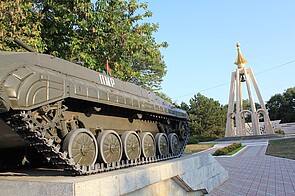
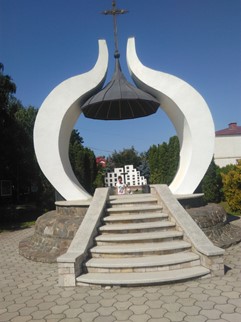
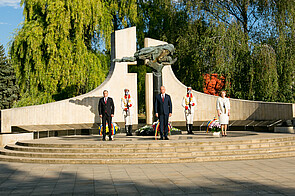
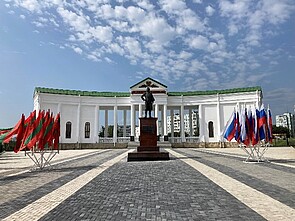
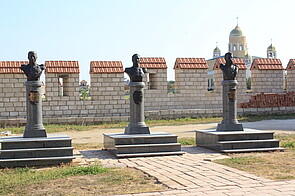
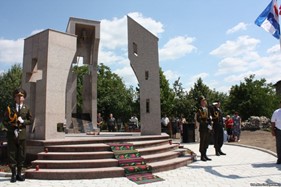
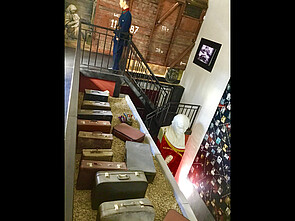
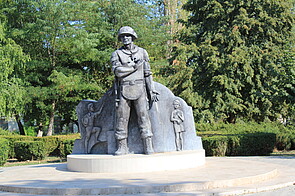
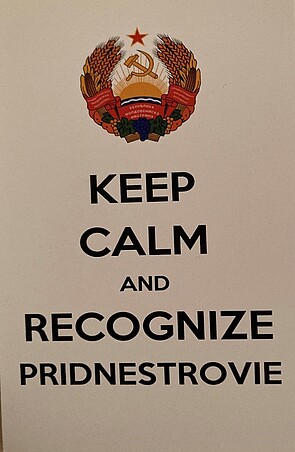
Anastasia Felcher · 27.09.2024
The Divided Legacies of 9 May in Moldova
Read more
Get this article as PDF download (including pictures).